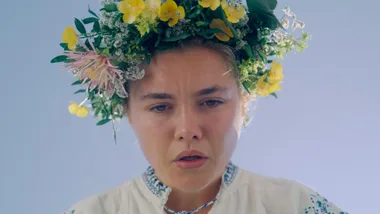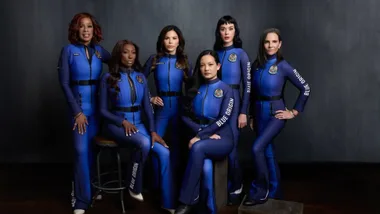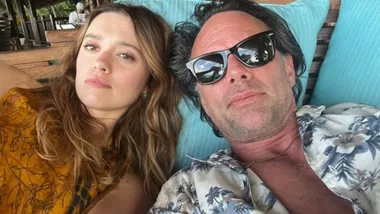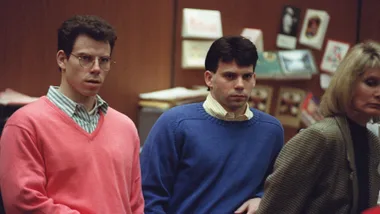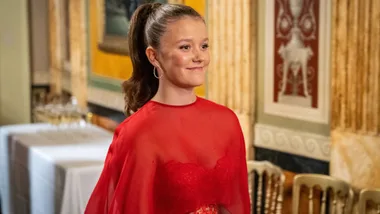In Texas, bigger is better. At least that’s the case if you’re sitting in a diner eating a burger and a plate of fries. Not so much if you’re a cheerleader for the Dallas Cowboys (and only 36 women around the US make the cut every year – the selection process is brutal).
Since the launch of Netflix’s 2024 documentary series America’s Sweethearts: Dallas Cowboys Cheerleaders, there has been criticism of a culture where body shaming is alive and kicking (literally – have you seen their split kicks? Ouch).
I don’t know what I expected when I sat down last Saturday night to watch a show about cheerleaders, but it wasn’t overt body-shaming and tearing down women. I guess I expected more empowerment, inclusivity and diversity. More, I don’t know, fun? Instead, it was like the original Barbie was back – way before Mattel got slammed for the lack of diversity in their dolls.
Are We Back to 90s Body Shaming?
I sat there, horrified, feeling like the clock had stopped in the 90s, and someone forgot to restart it. You might remember the appalling body shaming that went on in the 90s. Cue Nicole Ritchie being interviewed on the red carpet and asked by a reporter:
“On TV, you are a little fuller… How do you feel about the fact that maybe the thickness may hinder you from getting certain parts.”
Or Victoria Beckham getting asked mid-interview if she was back to her ‘normal’ weight. When she awkwardly replied yes, the journalist asked her if he could check and pulled out some scales. “This is horrible,” she replied.
Yes, Posh, it’s bloody horrible.
I don’t want my girls to ever watch the Dallas Cowboys Cheerleaders documentary because all it does is reinforce a world where girls aren’t valued, and the size of their bodies determines their self-worth. No, thanks. I’ll pass.
Why Was Veteran Cheerleader Victoria Kalina Picked On?
The show featured one cheerleader Victoria Kalina, who opened up about her struggles with disordered eating, anxiety, and depression. Her vulnerability was so raw, I almost wanted to fly to Dallas and give her a hug.
“When I look at myself in the uniform, I’m always like, oh, man, I need to lose at least three pounds,” she said in the series. To deal with her depression, she’s struggled with binging and purging food. “It’s a binge to get that feel-good, that empty feeling filled again, but then game time comes, so then you just gotta get into those baby clothes, get into that baby uniform and that cycle just keeps going.”
Who Is Dallas Cowboys Cheerleaders’ Director Kelli Finglass?
Dallas Cowboys Cheerleaders’ director Kelli Finglass is the focus of the show and honestly, she’s not likeable. “Each cheerleader has a custom-made uniform for her shape and they are hand-tailored,” she said. “And outside of just trying to make that uniform fit and and have the best, most beautiful lines, we don’t talk about weight or things like that.” That’s not what I watched on TV. The body-shaming was extreme.
Finglass has said she “does not make excuses for our standards… It is a highly visible organisation with very elite dancers and the uniform is amazing and beautiful and custom-tailored to each individual figure… I’m not making any excuses.” Wow, what a role model. Good for you Kelli – you go girl!
How Does The Series Reinforce Outdated Beauty Standards
Ultimately, the series reveals a troubling history of body shaming that dates back to the squad’s inception in the 1970s. And while the Dallas Cowboys Cheerleaders organisation claims to have moved past explicit weight requirements, the immense pressure on the women to maintain a certain body type is uncomfortably obvious. The organisation’s current expectation is for cheerleaders to “look well-proportioned in dancewear”.
Could someone please define well-proportioned?
Of course, I realise this issue extends far beyond the DDC. Professional cheerleading as a whole seems to be grappling with outdated beauty standards and practices that prioritise appearance over athleticism and wellbeing. The DCC, as one of the most high-profile squads in the world, has both the opportunity to lead the charge for change. And judging by what I saw on Saturday night, there’s not much change happening.
What’s Next For the DCC?
I live in Australia. My girls will not be cheerleaders. But as tweens, they’re already conscious of their bodies. What I want them to see is diverse athletes who truly embody the confidence and empowerment they’re meant to represent.
I’m not the only one who has found the body shaming and general degradation of women hard to watch.
Finglass’ Instagram page is full of comments: “You need to be a better advocate for these women or retire with dignity,” one woman wrote.
The comments continued.
“The DCC are extremely underpaid, and your methods and unreasonable body expectations cause eating disorders and anxiety and you think this is all justified by ‘passion’ for cheerleading. You are a woman exploiting women,” said another.
“Shame on you for failing and body shaming young women,” wrote another.
In the end, it’s clear that the Dallas Cowboys Cheerleaders—and the broader world of professional cheerleading—are at a crossroads.
The question now is whether they’ll choose to lead the way into a more inclusive future or remain stuck in a past that’s long overdue for retirement.
As one fan aptly commented on social media to Finglass: “It’s time to be a better advocate for these women or retire with dignity.”
Indeed, it’s high time for cheerleading to cheer for change.



